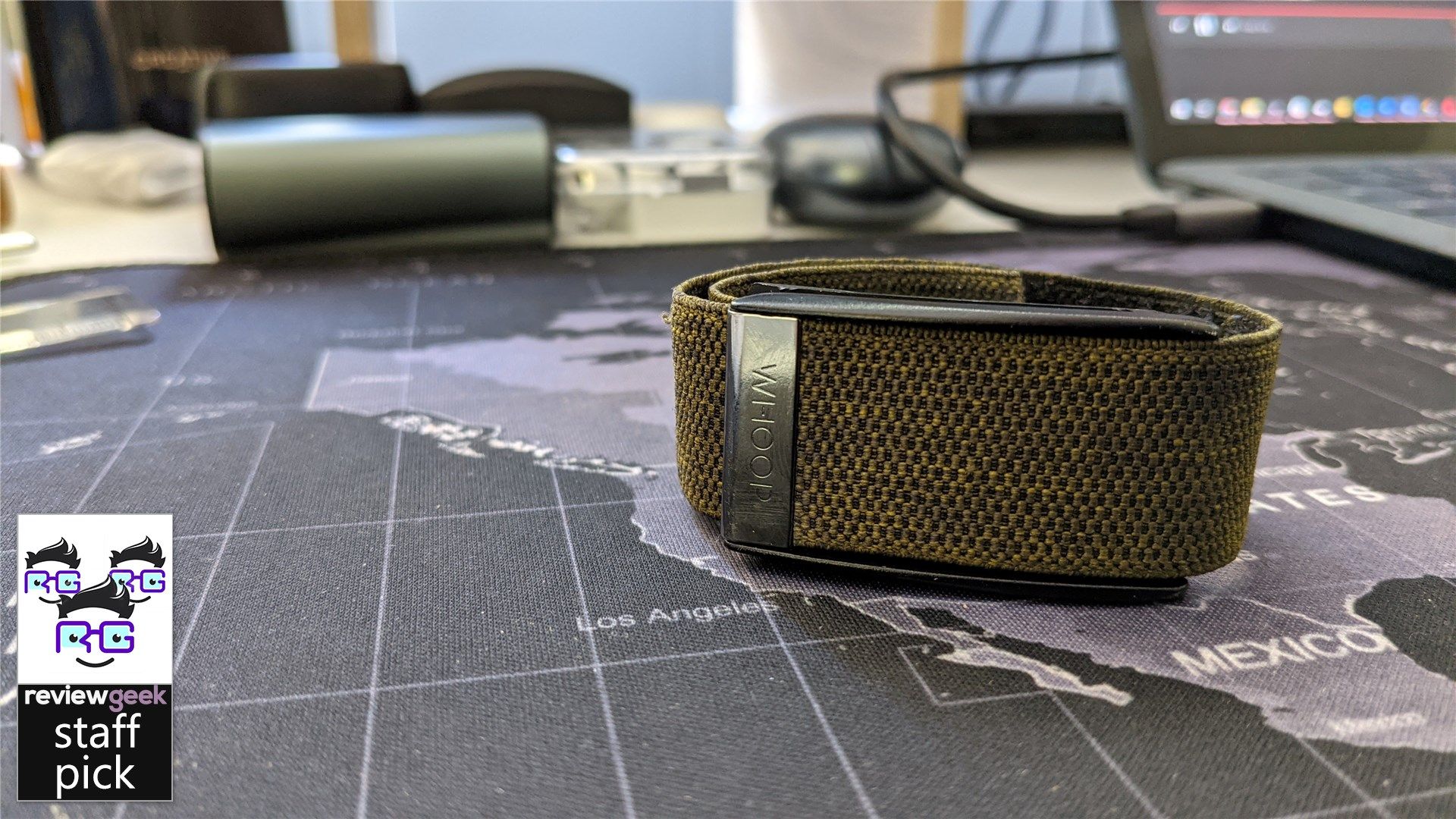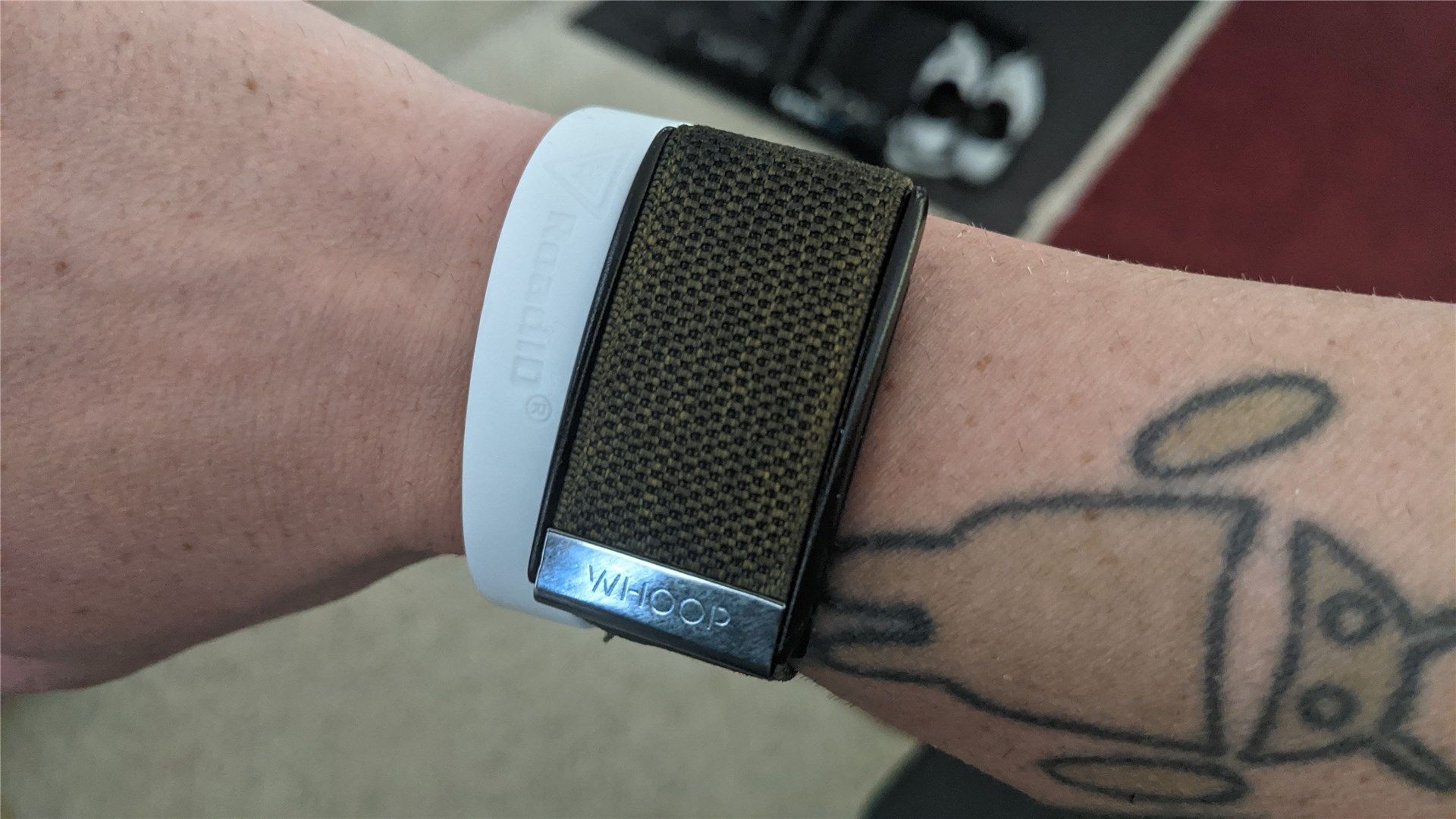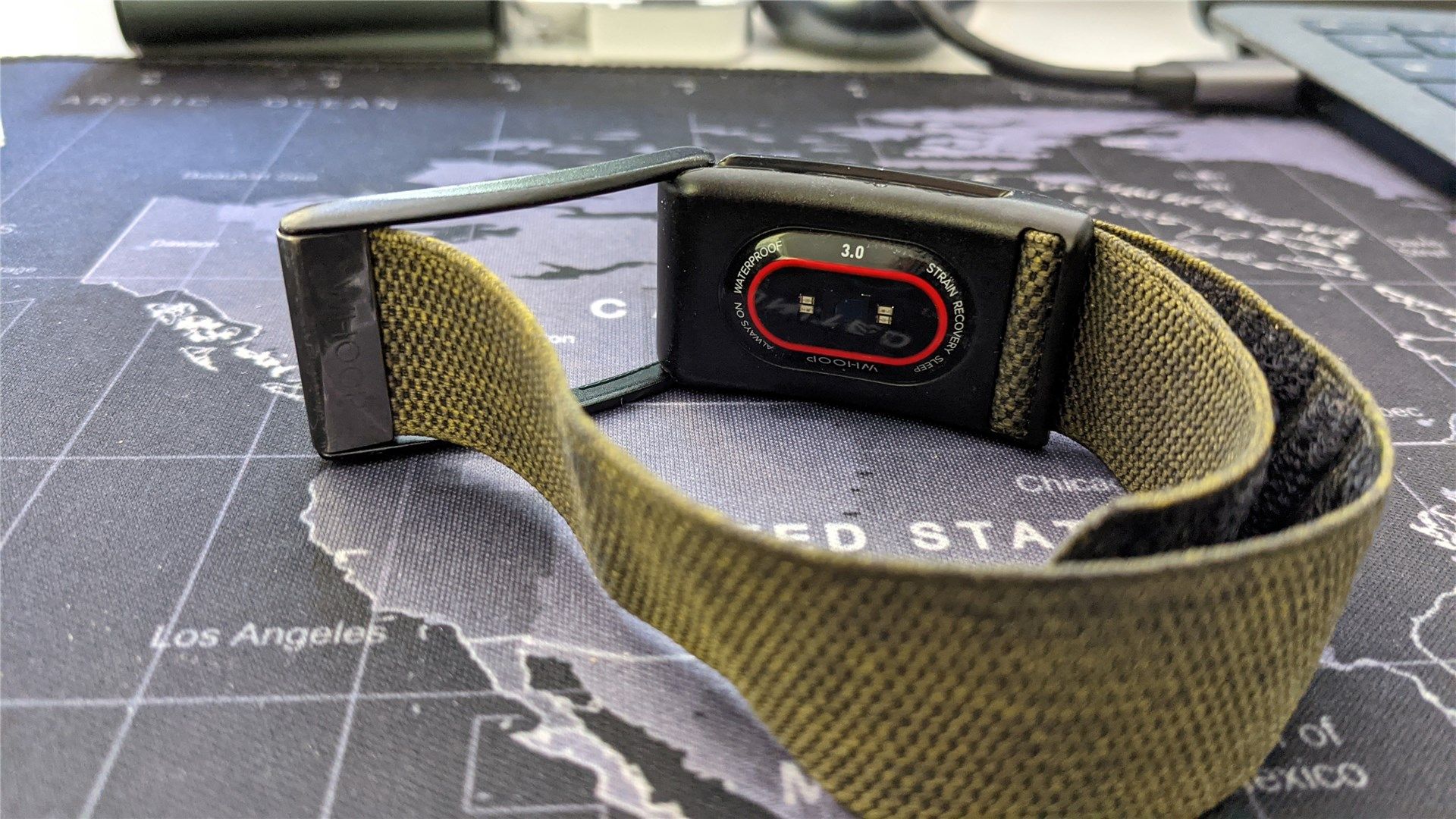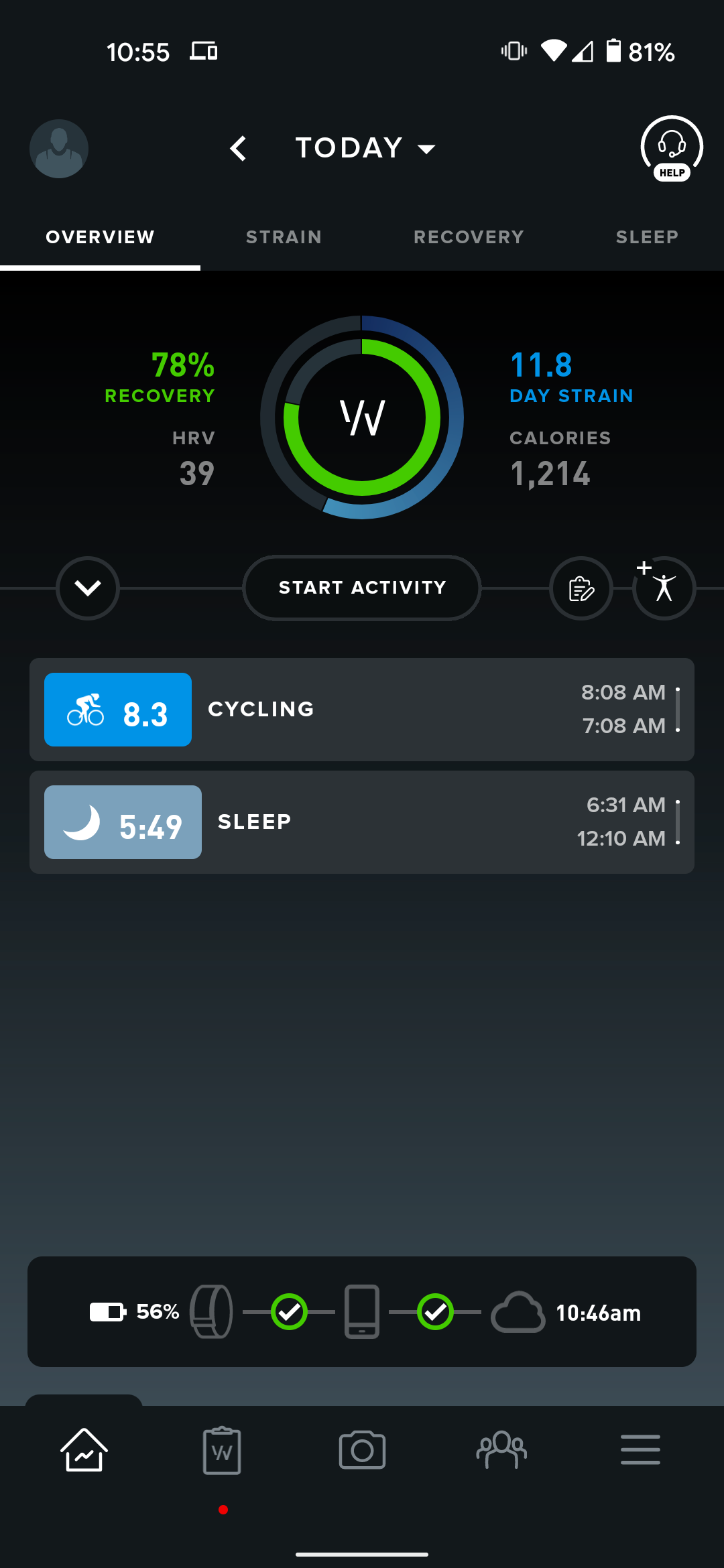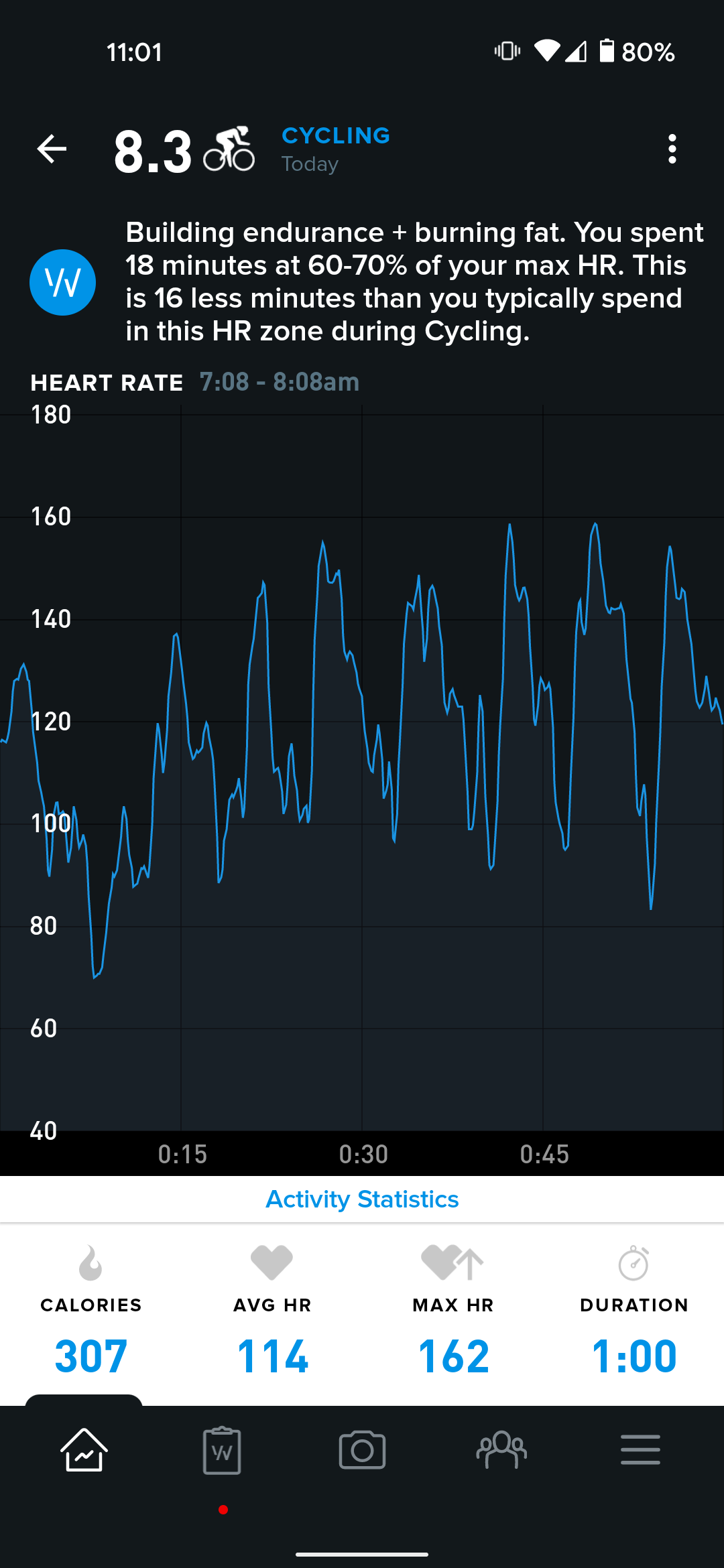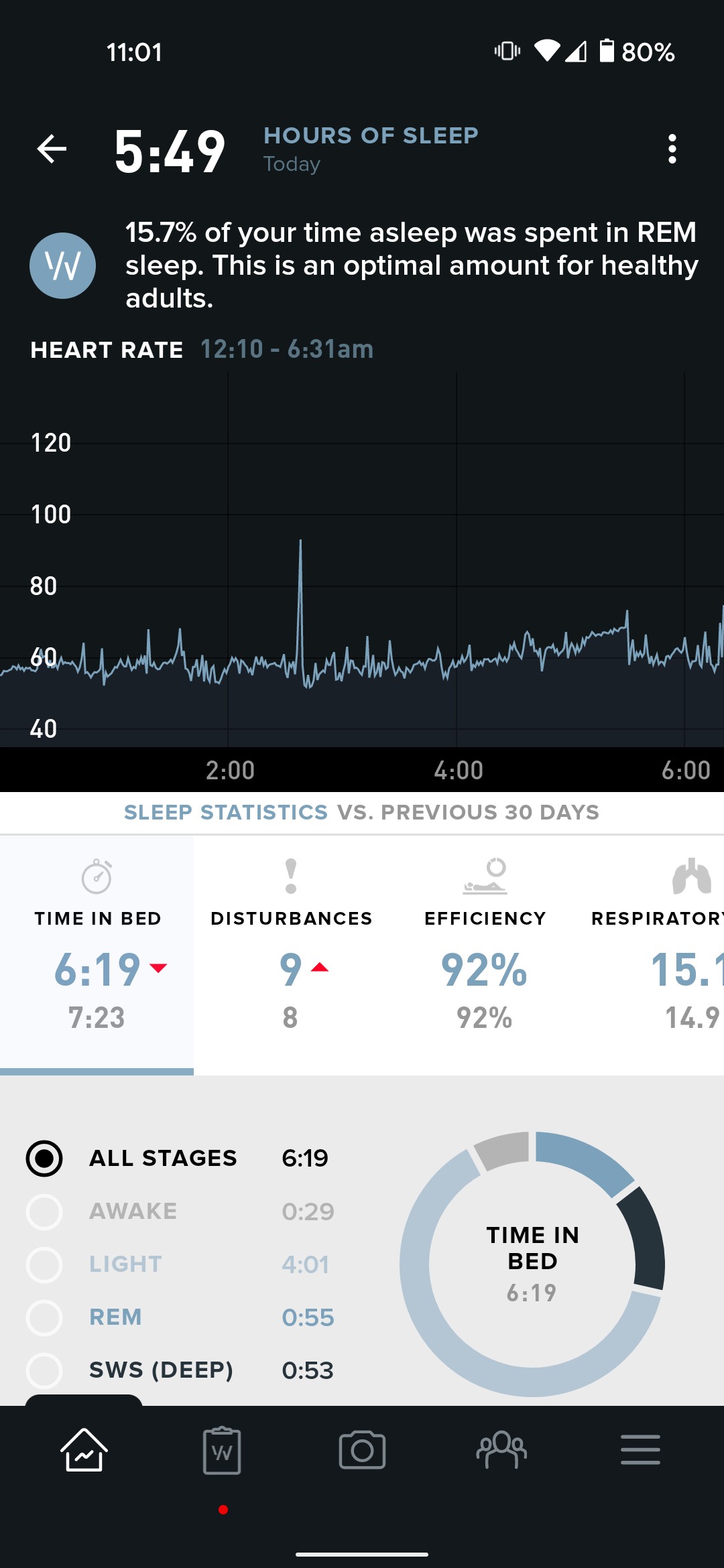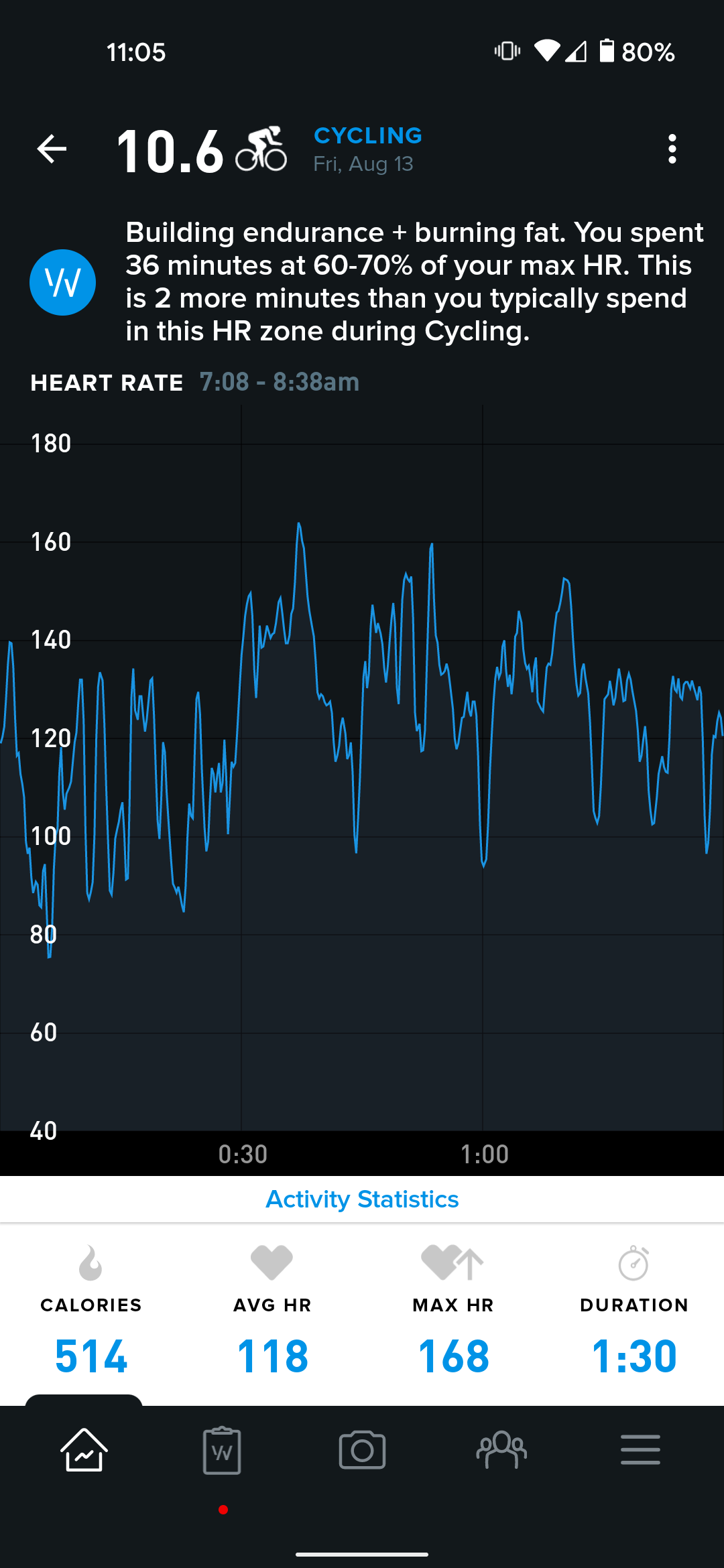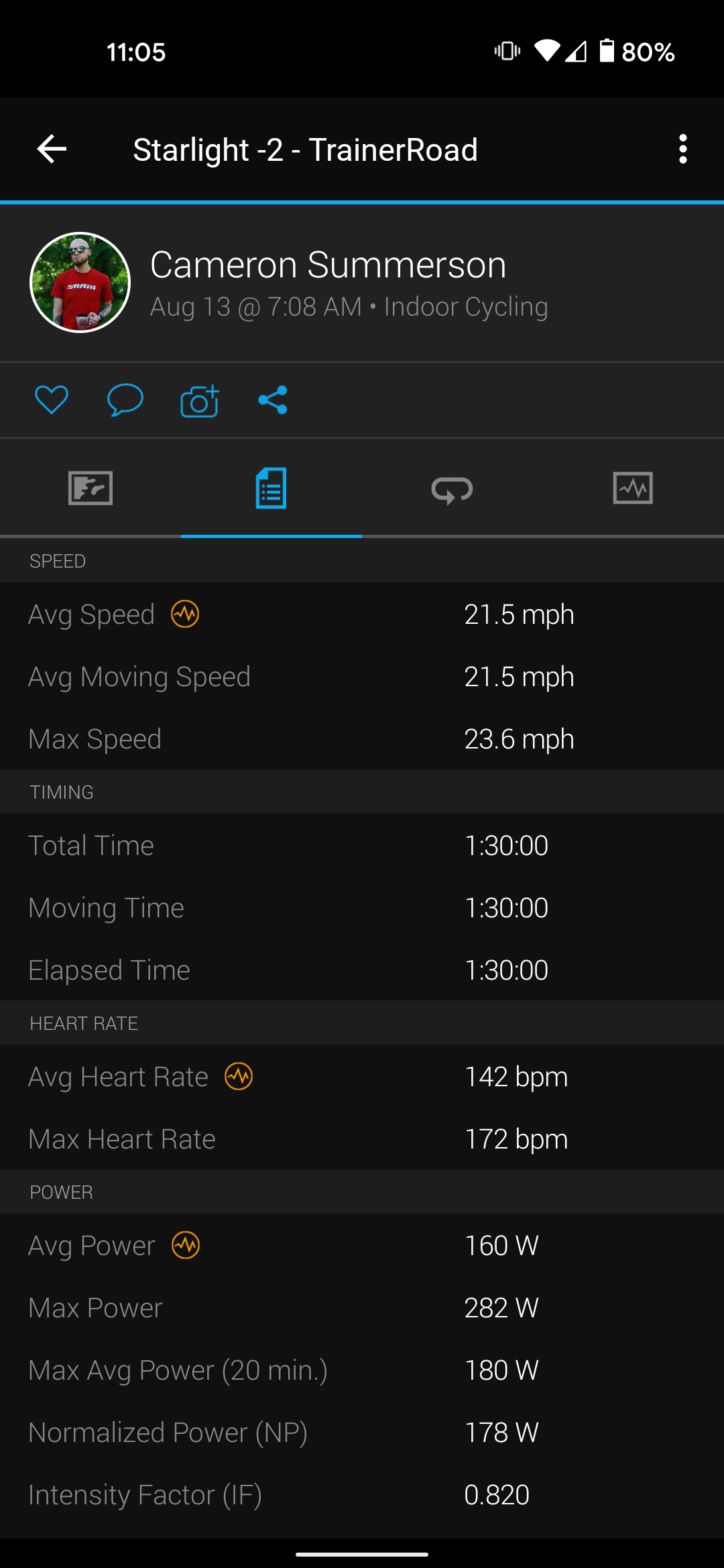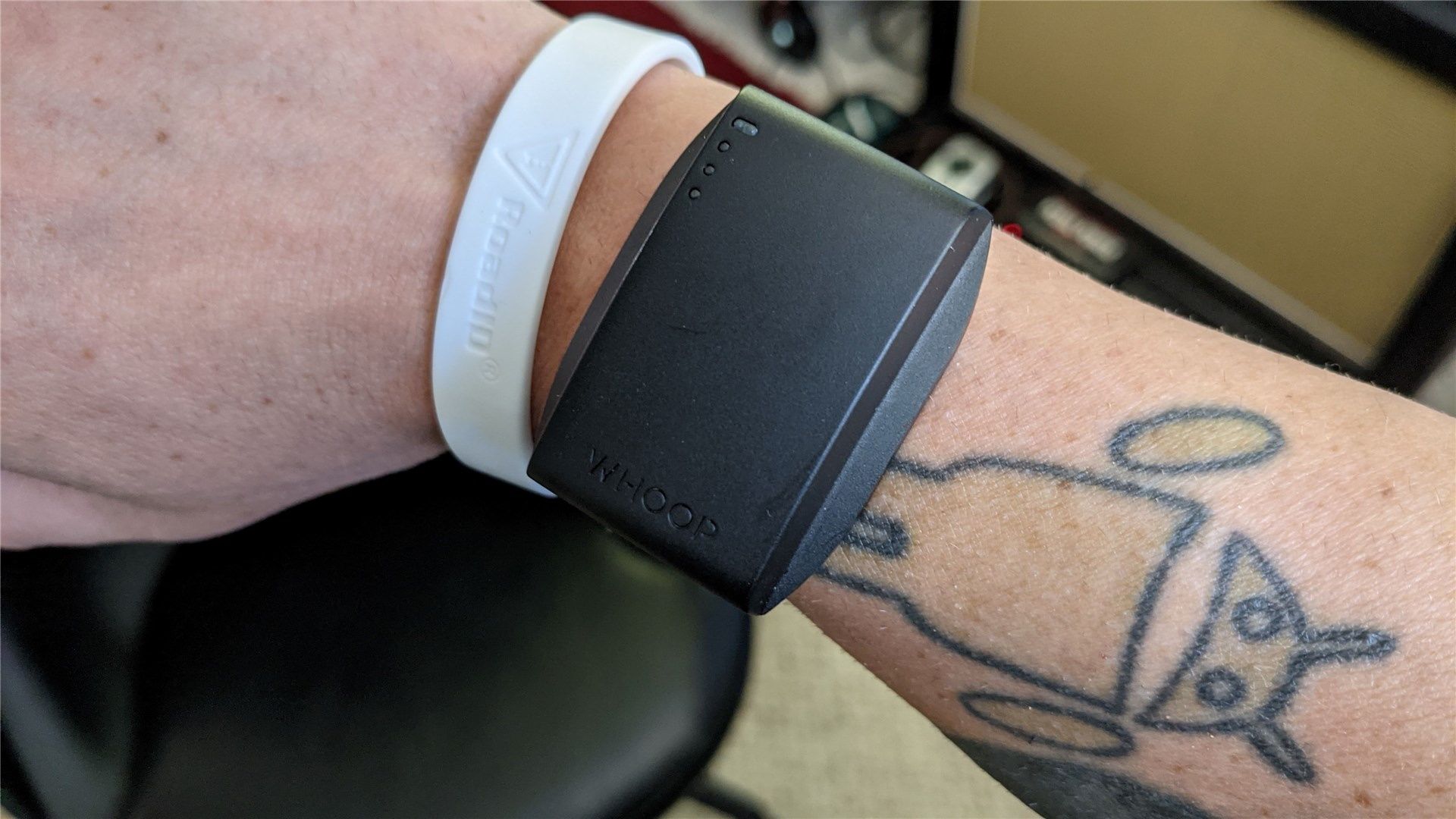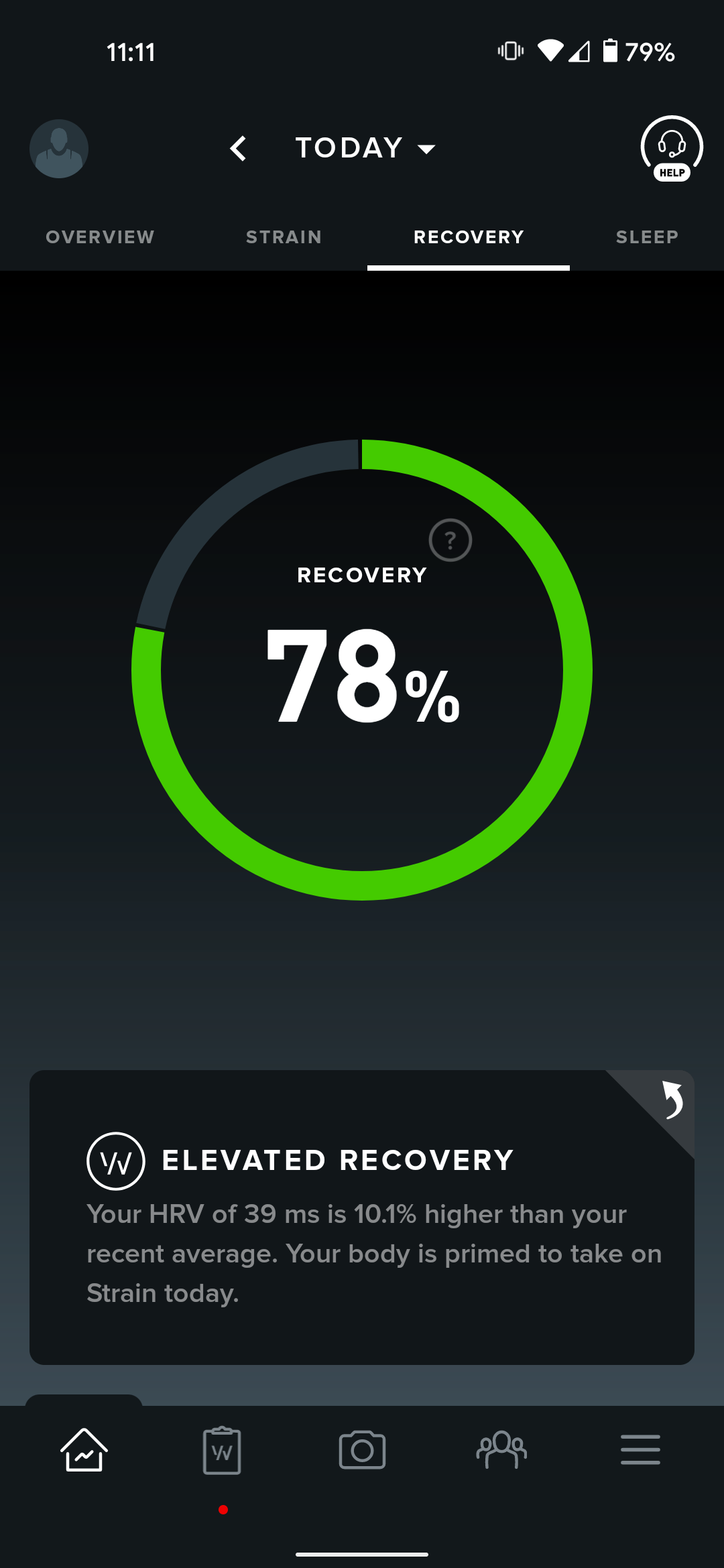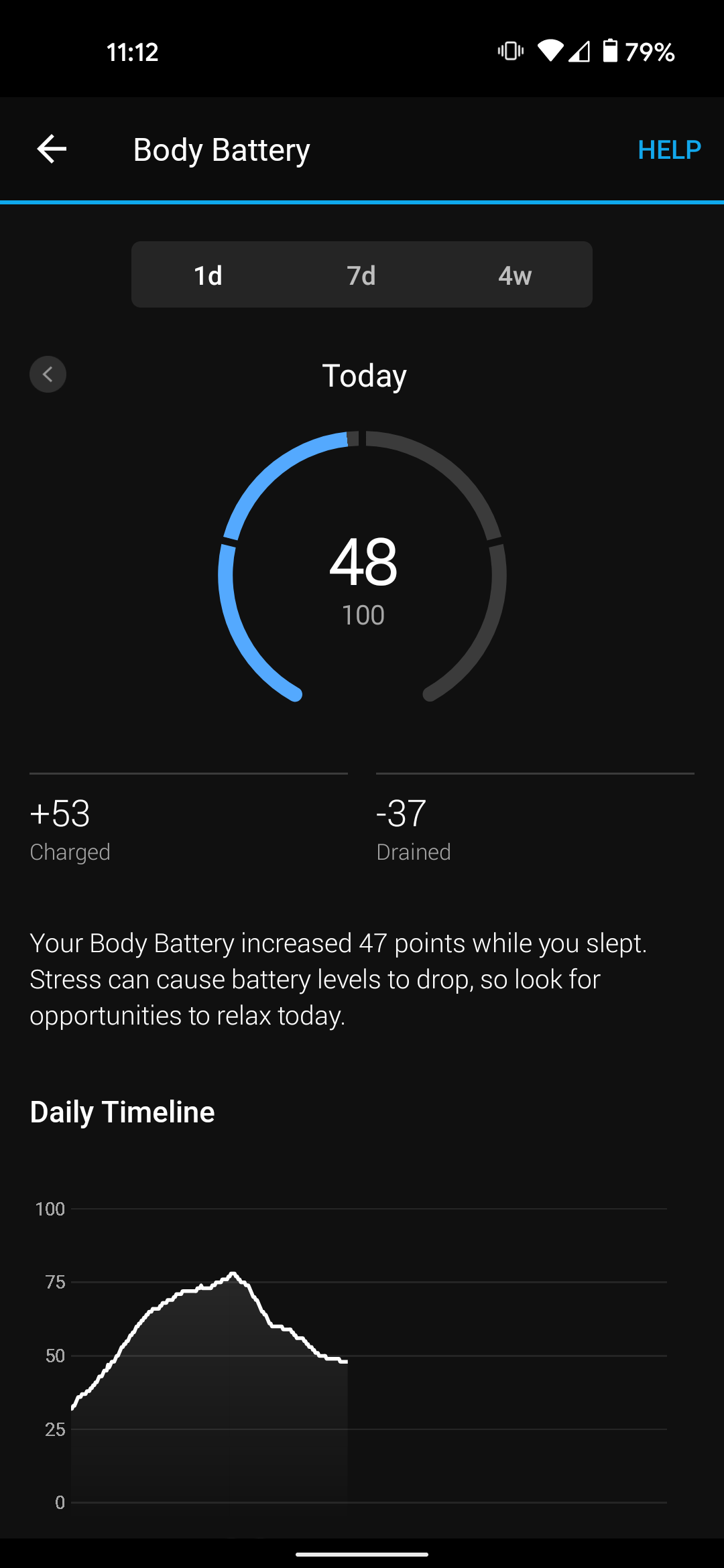Quick Links
There are a billion (give or take) fitness trackers on the market. But Whoop is one of the few (only?) trackers where the focus is on recovery. It's a fascinating philosophy because recovery is the most important aspect of training. But how well does it work, and is it actually useful?
I've been using the Whoop strap 3.0 for the past two and a half months (or so) to find out. I've only taken it off a handful of times, so it's pretty much been attached to my body during activities, sleep, and everything in between for the last ten+ weeks.
The main sticking point for me from the beginning was the price. Whoop's hardware is technically "free," but you have to agree to pay the company $30 per month in exchange for the service. There isn't a trial, but you can return the band and get your money back if you change your mind within the first month. If you cancel after that, you keep the band. But it's useless without the service anyway.
So is it really worth it for a device with no screen, only tangential fitness tracking, weirdly short battery life, and questionable heart rate accuracy?
Yeah, kind of.
What Is Whoop?
I've had more than one person ask me what the Whoop is while I've been wearing it because it doesn't look like any other fitness tracker on the market. To start, there's no screen. No way to interact directly with the device itself. You wear it and let it do its thing. The unit itself is black, but you can at least buy different bands to spruce it up a bit.
So, to answer the question in the subhead: It's complicated. It's kind of a fitness tracker, but I have a hard time seeing it that way---actual fitness tracking is more of an afterthought in my mind. Whoop's real prowess is recovery tracking. So yeah, it's a sleep tracker, but it's not just a sleep tracker.
In short: It tells you when you're rested, recovered, and ready for strain. Or not ready. It provides a daily recovery score to help you easily quantify this info, as well as a sleep coach to guide you on how much sleep you need on a given night.
Whoop measures your recovery by monitoring your Heart Rate Variability, or HRV. This is a complicated subject (and far more nuanced than I can get in the scope of this piece), but the long and short of it is that it's the measured time between the beats of your heart. It's a more refined metric than "beats per minute."
As Whoop explains in this detailed look at HRV (you should read this if you're interested in learning the finer details), if your heart rate is 60 bpm, that doesn't automatically mean it's beating once per second. There are nuances within these beats---one may take less than a second, where the next takes more than a second.
Here's the tricky part: You'd think that the more regular your HRV, the more recovered and primed your body is, right? Nope---it's actually the opposite. The higher the variability between beats, the more recovered you are.
This is a key metric for Whoop and the basis for its whole system of quantifying recovery. The research and reasoning behind this are highlighted well in the above-linked piece, so I highly recommend reading that for a deeper dive into HRV. It's fascinating stuff.
The main thing to keep in mind here is that every person is different. Sure, umbrella studies give blanket overviews of the average HRV for different groups of people, but ultimately, this is an apples to oranges comparison. You can't really compare your HRV to that of someone else because several factors can make it vary wildly from person to person. Whoop uses your specific HRV to track your body's recovery.
Anyway, enough about HRV! The whole point of Whoop isn't really to help you monitor every aspect of your performance. It's to help you know when you're overreaching and when you've recovered, both of which can help prevent overtraining.
Of course, it still tracks activities, too---how else will it know how to balance the load between day strain and recovery? But again, you don't really have to do anything. Like sleep performance and recovery, Whoop is designed to automatically detect activities, too.
That said, it's been pretty hit and miss for me. Sometimes, it doesn't detect the activity at all. Sometimes, it detects part of the activity. Sometimes, it nails it.
The good news is that you can either manually input your activity afterward, tweak any incorrect auto-detections, or even start an activity ahead of time. But again, that all has to be done from your phone because there's no screen on the device.
Unlike most other activity trackers, though, Whoop takes into consideration everything you do. From work to chores around the house to shopping, this all goes into your daily strain score. Because Whoop realizes there's so much more to most athletes than just athletics.
So, How Accurate Is Whoop?
Oof, that's a loaded question! In short, I'd say: ehhhh. But this is an issue that's simply bigger than Whoop.
Because Whoop is primarily designed to be worn on the wrist, that's where it measures your heart rate. And in my (mostly vast) experience with wrist-based heart rate trackers, they're not great when it comes to accuracy. To make matters worse, most of the time, they're not consistently inaccurate either---sometimes they may get your HR data correct. Other times it may be wildly off.
And it's no different with Whoop. I track all of my workouts with a chest strap, and sometimes Whoop will be within a reasonable margin of error---two or three beats per minute. So, for example, my chest strap may say my max HR was 160 for a given workout, while Whoop may spit back 158 or 162. That's acceptable.
Left: Whoop; Right: Garmin Connect (using a chest strap). Note the difference in average heart rate.
I find that it's most inaccurate on the extremes, though---the low and high end. For example, if I redline my heart rate at 185 or 186, Whoop will rarely (if ever) see that and give me a much lower number. It often reads my resting heart rate 3-5 beats higher. The same can be said for calories burned---there's not a chance I'd trust Whoop's calorie tracking.
I also experienced a weird anomaly where it would randomly detect my heart rate as 170-180 for between 10 and 50 minutes for no reason. Like, I'd be sitting at my desk. Or walking around a store. This happened about eight times (or so) during my testing phase but was far more common in the first couple of weeks.
To combat this, Whoop sent me the bicep band to try, but ultimately it was just too annoying to wear regularly, so that test was short lived and I went back to the wrist strap.
But that's the thing. Accuracy is crucial when we're looking at such small nuances like HRV. But there's also the consistency key---something I've been preaching for a while. If you wear Whoop as it's designed to be worn---all day, every day---then the consistency should trump the inaccuracies as they arise.
Because the point is to get a detailed snapshot of your overall health and recovery, not an intimate look at your heart rate data. You can have one without the other, and Whoop does a good job there.
Is Whoop Worth It?
As I said in the beginning, Whoop's hardware is technically "free," but it comes with a monthly $30 fee. If you prepay for a year or year and a half, it drops the price to $24 or $18 a month, respectively. I feel like most people at least start with the month-to-month subscription, however, so that's what we're going to focus on.
To start, you might be wondering what that $30 a month gets you---I mean, tons of trackers record sleep data and do some form of rest tracking without a subscription service, right? Right. But Whoop goes big here. The charts and graphs are detailed. The weekly report lets you see a nice overview of your strain, sleep, rest, and recovery. The monthly reports get absolutely insane with the level of detail. I'm a metric nerd, and I love it.
The downside is that the tracker is always, uh, tracking, so the battery life isn't great for a device with no screen. On average, I had to charge it about once every four or five days. It's not totally bad though, because Whoop charges with a battery pack that you attach to the device while you wear it, so you literally never have to take it off. I dig that so hard.
Whoop's interaction with its users is also intimate and detailed. If you have an issue, questions, or anything else, you can talk to a real person at Whoop. And we're not talking about a generic, canned response from someone pointing you to other documentation. A real conversation with a real person. They go above and beyond here.
You're not simply paying for a tracker that tells you how you slept last night. This is a long-term commitment that gets more valuable the longer you use it. If you're a serious athlete who loves to track trends and improve performance, then Whoop is almost certainly something you'll find value in.
But there's the rub: if you're "a serious athlete." I was originally interested in Whoop because one of my favorite cyclists, Ted King, talks it up on social. Similarly, my favorite pro cycling team, EF Education First, partners with Whoop. I mean, if it's good enough for my favorite bike riders on this planet, then it has to be good enough for me, right? (Maybe.)
I don't know if you consider yourself a serious athlete. Or an athlete at all. (If you work out regularly and care about performance, you're an athlete. Period.) I'm an amateur athlete. An enthusiast athlete. Or whatever other word you may want to use to describe "not at all pro in any way. Bro, I don't even race."
But I also care about performance and push myself to show up on event days. So, is Whoop valuable for me? Yes. And also no.
When I got my Whoop, that was the question I wanted to answer. I assumed it would be an easy yes or no, but as it turns out, it's a lot more nuanced than that. At this point, I'm more torn on Whoop than ever. Because I also wear a Garmin.
Left: Whoop's recovery feature is static throughout the day; Right: Garmin's Body Battery, which tracks rest and recovery throughout the day.
There's a much bigger comparison to be made between Garmin and Whoop (which I will be doing in the coming weeks), but the gist is that I get a lot of rest and recovery tracking from the tool I already wear every single day. Maybe you do, too. And that's where price really comes into play.
The base price of $30 a month comes out to $360 a year. For $360, you can get a pretty damn nice smartwatch/fitness tracker. Like a Fitbit Versa, Garmin Versa 2, Garmin Forerunner 55, Garmin Instinct, or several others. Those all do sleep tracking and various versions of recovery tracking. Plus, they'll last you for several years.
For the price of two years of Whoop, even on the lowest end, you could get some of the highest-end watches that Garmin offers.
And that doesn't even begin to cover all the things that actual smartwatches do that Whoop can't. Like tell time, show notifications, and track activities in real time. The tradeoff is that the recovery tracking isn't as good. It's not even close.
That puts most athletes in a serious predicament because they really want both. That means you're shelling out hundreds for a reliable fitness watch and $30 a month for Whoop on top of it. Being an athlete is already expensive, but that seems excessive.
So, you have to ask yourself what's more important to you: activity tracking or recovery tracking? It's hard to have the latter without the former, but it's entirely possible to have the former without the latter. The odds are you've been doing it for years.
Ultimately, I'm torn on who Whoop is for. Part of me thinks it's only for the most serious of athletes who are looking to eke out just a little bit more performance. The other part of me says it's for the everyman athlete. Not the ones who have 20 hours a week to train, but the ones who train for five hours a week, work a full time job, and have a family to raise.
Why them? Because it will help the time-crunched user get the most from their training by balancing proper rest and recovery. I always thought I did a pretty good job of this, but Whoop has been eye opening for me. I've changed my sleep habits and my training load as a result. I'm more mindful of my sleep habits now, which has led to better, more predictable sleep. I also lowered my training load slightly to encourage recovery. Not only do I feel like I get better sleep now, but I also have more energy during the day because I don't completely drain myself every day.
So, does that means it's for everyone? Yeah, kind of.
Conclusion: The Tracker You Need, But Probably Not the One You'll Buy
Ultimately, Whoop has a lot of value in the lives of users who want to optimize performance. It doesn't matter if you're an elite athlete or an enthusiast---we can all benefit from the type of data that Whoop offers. Full stop.
That said, the steep cost of entry will make the decision for many (most, even)---especially anyone who already tracks sleep with another product. But Whoop takes a very different approach from almost everyone else, which definitely has its place in the market.
But at the end of the day, you have to ask yourself if better recovery tracking is really worth it. If it is, then it's hard to do better than Whoop.
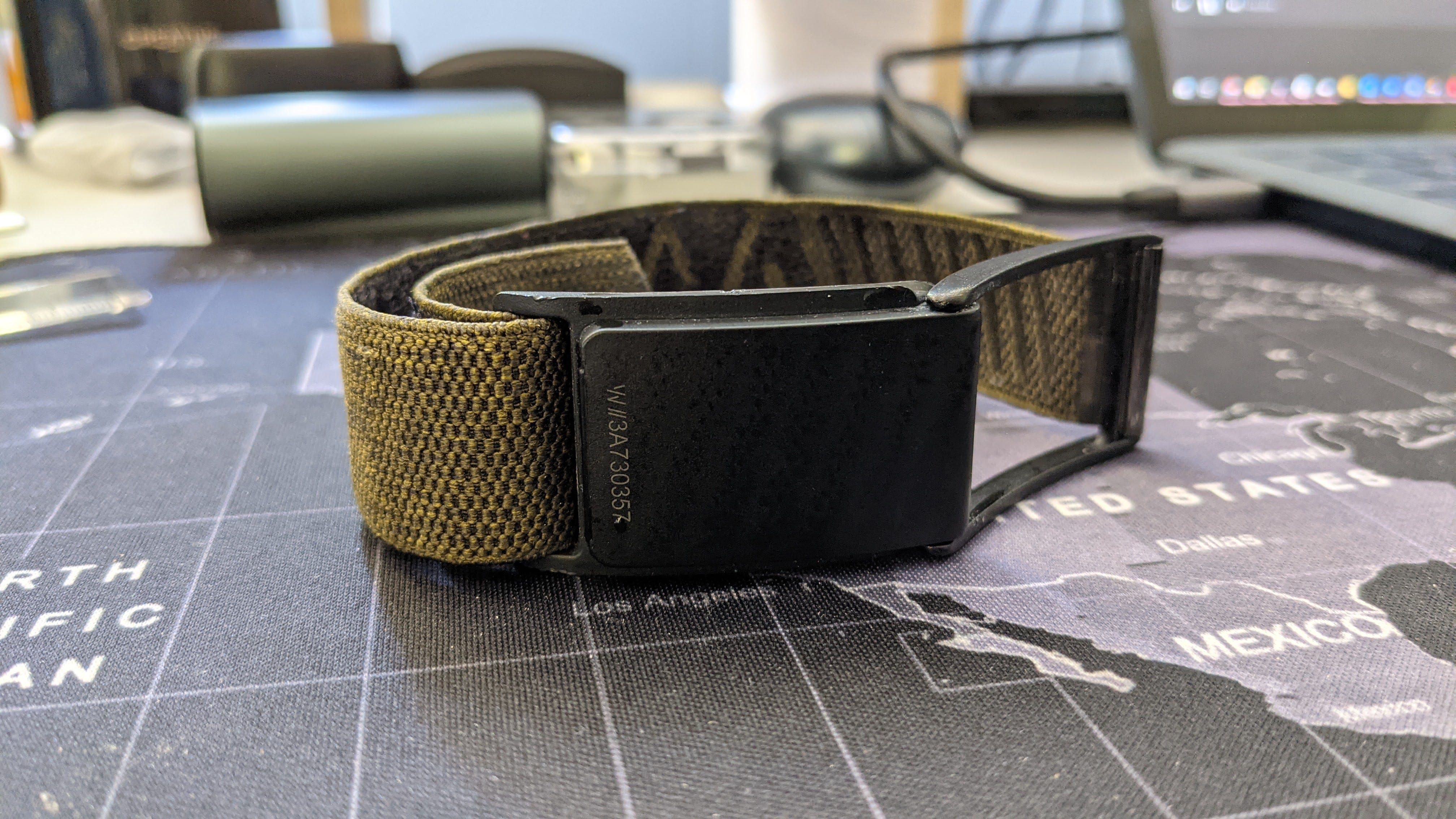
Whoop Band 3.0
- A very focused tracker for a specific type of person
- Tracks recovery in meaningful and actionable ways
- Expensive subscription
- No display or tangible interactions
- Extremely limited in use

